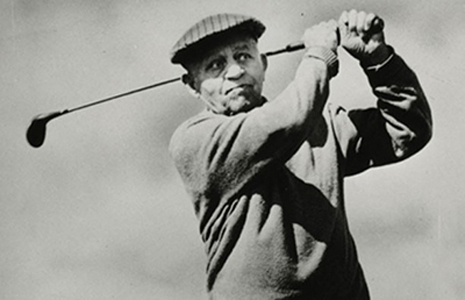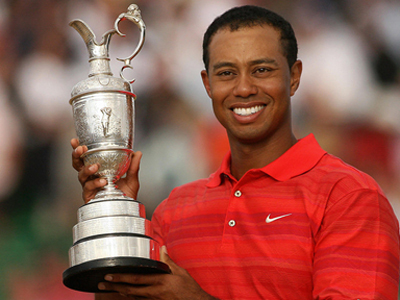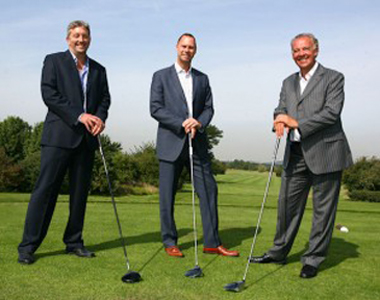Golf: Class and Race
Although this remains rather predominant today, golf began as a strictly white,
male sport."Social scientists have urged us to rethink the concept of public space
[...] Whether it is the social and cultural boundaries that influence our movements,
the limitations on use imposed by increased surveillance and policing, the growing
trend toward privatization, or the marginalization or exclusion of particular groups,
such as the homeless, it is clear that not everyone is afforded equal or equitable
access to our "public" spaces" (Wells, 152). In this instance, Wells is referring
to the equal access of golf courses to African Americans. The first African American
to play in U.S. Open on the PGA was a man named John Sippen. "Some of the
professional players threaten to boycott the event when they discover his race,
but back down when USGA President Theodore Havemayer defends Shippen and another
entrant, Shinnecock Indian Oscar Bunn. Shippen ties for sixth and wins $10. He
goes on to play in five more U.S. Opens" ("Timeline of African-American Achievements
in Golf."). Since then, many African Americans have joined the PGA, the most known
being Tiger Woods.
Many of those who play golf at country clubs feel a sense of
stature that comes along with the sport. Perhaps it's the long history of white,
upper class males playing the sport, or the country clubs that men have strict
membership with, but the predominant class and ethnicity have long played a
significant role in the game that has carried many presumed roles to this day.
Park expresses that "One common characteristic of golf in any country is that
it appears to have started as a game for the more privileged classes" (189).
Within the game of golf, hierarchies continue to reproduce and function in
courses throughout the world. "Pierre Bourdieu (1984), in particular, proposed
the concept of cultural capital that measures a person or group's implicit
ability to participate in taste hierarchies. Other theorists (including Bourdieu)
have identified social capital, an explicit set of social relationships that
are also correlated to socio-economic advancement" (Butt). The theory of
socio-economic advancement in golf is commonly expressed with golf-play within
business deals and amongst businessmen.
Another barrier created by the
game of golf is a language and regional barrier, which surprisingly was still a major
issue very recently. "In 2008, Carolyn Bivens, then LPGA commissioner, issued an
ultimatum to the 121 international players with LPGA cards: Speak English, or else.
It was a knee-jerk reaction to the perceived problem of too many foreigners on
tour, in particular South Koreans, and their inability to interact with U.S. fans
and media. Under the proposed mandate-it was quickly rescinded after it met with
a maelstrom of criticism-players failing oral evaluations beginning in 2009 would
have faced suspensions" (Chamblee).
Once a player steps foot on the golf course, the course designer, as well as the
history of rules, class and ethnicity that follow the sport interpellate the individual
into a very particular way of playing this game.
-Next Hole-



